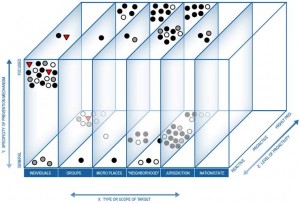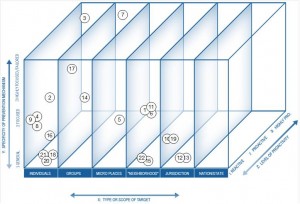Matrix Demonstration Project
Examples of Evidence Assessments:
- For Patrol Portfolios: One page summary, video, slides, and full paper.
- For Airport Security: Report and more information about this project.
- For city-wide criminal justice practices.
- For Federal Building Security.
- For the President’s Task Force for 21st Century Policing.
How to Conduct Evidence-Assessments


Of the many ideas involved in evidence-based policing, two principles are key for law enforcement agencies: (1) applying existing knowledge about effective and fair tactics and strategies to police practices and (2) developing regular processes to assess existing practices. However, police agencies are often constrained by the time, funds, and human resources available to regularly evaluate strategies and tactics or to gather existing research about policing.
One reason for developing the Matrix is to encourage the use of “evidence-assessments,” where agencies might compare their own tactical and deployment portfolios against what is known from the evaluation research. The Matrix can provide a “workspace” to roughly assess the evidence-base of agency interventions and tactics in the absence of evaluation.
In this demonstration, we provide examples on how to use the Matrix to assess an agency’s deployment portfolio. The first example listed at left (and depicted in the illustration above) details steps for agencies to estimate whether the array of tactics used by patrol and specialized units is evidence-based. Other similar examples are also given in evidence assessments of airport security (i.e., situational crime prevention measures) and city-wide crime prevention programs.


